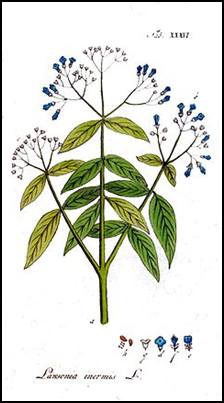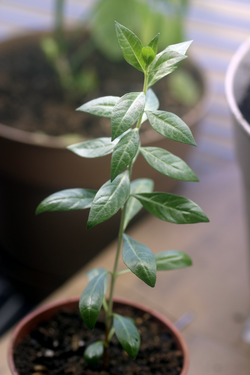You entered Egyptian Privet, the more common name is...

Henna
SCIENTIFIC NAME:(Lawsonia inermis L.)
Native to tropical and subtropical regions of Africa, southern Asia, and northern Australasia, Henna is now commercially cultivated in UAE, Morocco, Yemen, Tunisia, Libya, Saudi Arabia, Egypt, western India, Iran, Pakistan, Bangladesh, Afghanistan, Turkey, Somalia and Sudan.
Henna is a tall shrub or small tree with many smooth, spine tipped branches. The 1 to 2 inch long leaves are grayish-green in color, smooth and deeply lobed. Henna flowers are white or red, small and appear tubular in shape.
Common Names:
Alcanna, Egyptian privet, Henna plant, Jamaica mignonette, Jan-chih-chia-ts’ao (Chinese name), Mignonette tree, Reseda

Uses:
Henna has been used since the Bronze Age as a dye for hair, skin, leather, fingernails, silk and wool.Henna is not only the oldest known hair rinse in the world but is the most widely used as well. Remember to consider the color of your eyebrows and your complexion when choosing a shade for your hair. Henna dye shows the color more after the second day of application. Shampoo hair before using the hair dye.
Applications:
Powder:
Henna is simple to prepare. The fine cut leaves or powdered leaves are made into a paste with hot water and applied to the hair and allowed to remain until the desired shade is obtained. On finger or toe nails the paste is allowed to remain over-night or paste is renewed often until the desired shade is obtained. Plain Henna adds an auburn shade to the nails. Various shades may be obtained by mixing Henna with Indigo, Sage, or other dye plants.
Warnings:
Test a small strand of hair first, to assure you’ll be happy with the results.
With any herb, there is the risk of an allergic reaction. Small children and pregnant women should use additional caution when considering the use of herbal remedies.





